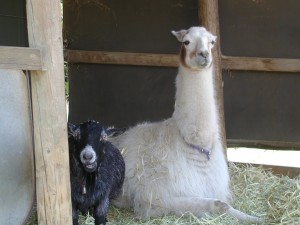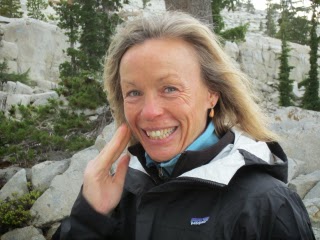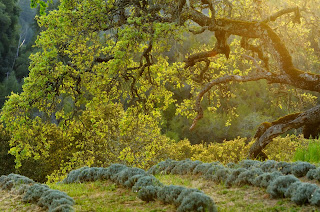When I was interviewing Napa therapist and water activist Charlie Toledo, Executive Director of the Suscol Intertribal Counsel, this week, we had a conversation not directly related to the drought and water that I found particularly healing. She told me that in pantheistic times, people had more fun.
"When I speak to elementary school kids, I always ask them, 'How do you think the California people used to pick their chief?' And most little kids will say, Oh, the meanest one, or the toughest warrior. The one who was the strongest or the best hunter. I tell them that the Northern California people used to choose their chief by the one who kept everybody laughing, the one who knew the most songs.
"First People around the world spend a whole lot more time celebrating," she continued. "If you go to places like Bali, they celebrate all the time. They're celebrating something every day. Everyday is a holy day. Every three days they're having parades and feasts and flowers and candles in the river. There's this whole thing of honoring the earth, being in balance with the earth. They're not into the consumption and the accumulation of material goods. Because really, we don't need that much."
Charlie said that First People in our area (Napa County) used to spend two hours a day meeting their needs. The rest of the time was spent in celebration, and singing, dancing, basket weaving, art: "You know, creating art, creating dances, creating feathered things, having gatherings. 'Gathering' is another word for 'partying'."
"They would come together, all these different people, and party. They traveled all the time, from Napa to San Francisco, San Francisco beyond. Young people would go on these long trade runs from the very north part of Alaska to the southern part of South America. People would spend the younger part of their life doing those trade runs, and going out to see the world, literally running back and forth and meeting people. There's obsidian from Napa Valley way down in South America. So it got traded through these trade runs. People were spending a lot of time having fun. And we've lost that."
This reminded me of an experience two years ago this last August, August 7, to be exact. I was driving home from my son and daughter-in-law's home in Petaluma after spending the afternoon with my then two-year-old grandson, Wesley. Melissa was very pregnant and probably in labor. On the drive home to Napa along Old Adobe Road, I came across a runner along the side of the road, a young woman in traditional dress carrying a feather, and then a few miles further on Route 121, a young man in running shorts also carrying a feather. It felt like an omen: my second grandson was on the way! And sure enough, a few hours later, I was be driving this same road back to Petaluma, shooting stars announcing his imminent arrival. In the early hours of August 8, Sabien was born! Such joy!
Later Charlie told me that these runners were part of a four year event, running from Alaska to Tierra del Fuego and that in 2012, they were running for water. My hope: this grandson of this generation, in his own way, will be one of those joyful runners who weave us together, honoring Earth.
Charlie told me another story in this conversation, a story of wholeness and beauty.
"Once I told one of my godsons about how we see the darkness as the grandmother that holds the stars in place, that's female energy and that it's so big that we can't imagine it. We were out by a fire, and he stayed up all night looking at the summer night sky. And when the dawn came, he said, 'I see it! It's the grandmother. She's holding us.' The darkness, the stars, he could feel the movement. He could hear the songs.
"So when you think that we're a very small part of this very large web of life that extends through the infinity of the universe, it's pretty amazing not to think of how rich we are, and what a wonderful place we live in. If we keep ourselves in balance, then it's all good."
Of the recent Napa earthquake, she added: "Occasionally the earth dances and moves. My three-year-old grandson was saying, "How come the earth has to be shaking? That was bad!"
"I said, 'No, that was good.' I said, 'Do you like to sit still for a long time?' He goes: No, he doesn't! And then I said, 'Why would we expect her to?'
"I keep telling people the night turns into the day, the day turns into the night, fall turns into winter, winter turns into spring, spring turns into summer. People are born, they get old, they die. Everything is constantly in flux."
After this interview, I slept well, perhaps because Charlie's stories brought some inner balance, the mark of a true healer! The earthquake, whose tail rests between the house and the goat barn, shook our foundations, scared us. Fear polarizes. Love—and joy— returns us to wholeness—to being held by Grandmother.
 Mary Pipher, author, psychotherapist, and activist, spoke at the recent Future First Conference in Minneapolis, addressing the most dangerous defense the human race could adopt at this point, that of "willful ignorance". According to Mary, willful ignorance occurs when we are caught between facing something too dreadful to acknowledge yet too dreadful to ignore.
Mary Pipher, author, psychotherapist, and activist, spoke at the recent Future First Conference in Minneapolis, addressing the most dangerous defense the human race could adopt at this point, that of "willful ignorance". According to Mary, willful ignorance occurs when we are caught between facing something too dreadful to acknowledge yet too dreadful to ignore.





